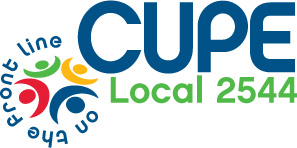PEEL REGION, ON – “The current funding formula for K-12 education is inadequate to meet the needs of students, workers and communities,” claims Dan Bouchard, President of Local 2544 of the Canadian Union of Public Employees (CUPE 2544) whose members maintain school facilities in Peel region. “The recent withdrawal of over $2.8 million in top-up funding to the Peel District School Board will hinder our ability to do our jobs properly and ultimately hurt the students and the people in the community who use these facilities.”
Currently the province is faced with over $15 billion in maintenance for outstanding repairs to schools on top of the regular maintenance to keep schools in operation. The formula for calculating school funding does not adequately take into consideration the fact that schools are more than just a collection of classrooms. Schools are dynamic and vibrant spaces in their communities that are in use well beyond regular class hours.
“The lack of funding has resulted in the closing of spaces, poor working and learning conditions and health and safety risks for students and staff,” Bouchard said. “When classrooms, washrooms and other facilities start closing, this has real effects on peoples’ lives. There are 277 potential classroom closures at Peel secondary schools and 730 at elementary schools. The ensuing reduction in staff will increase the maintenance backlog, create safety concerns, leave fewer spaces available for community use, and increase travel time for students whose schools get shut down.”
Classroom closures, however, do not stem from a lack of usage. “It’s not as though these classrooms are sitting empty,” Bouchard reports. “At some schools we have more students enrolled in night school and international languages, which take place on Saturdays, than we do on a typical school day.” School funding is based on prioritizing teaching the basic skills of reading, writing and arithmetic, and is averaged out across school boards without factoring in differences in geography and demographics. “Parents should be concerned about overcrowding in the remaining classrooms,” he added.
The funding formula does not account for differences in schools based on a building’s age, the community programs it provides, or even provincially mandated programs such as small class sizes and full-day kindergarten. This results in school boards choosing to direct funds away from maintaining infrastructure to pay for these mandated, but underfunded, programs.
“It takes a whole school to educate a child,” says Terri Preston, chair of the Ontario School Board Coordinating Committee. “Schools are so much more than just children sitting in a class room. They are lunch rooms, gymnasiums, and meeting spaces. They provide good jobs to people in our communities and they are social hubs that offer much needed space to community groups and adults seeking education. It is time to fix the funding formula so that the government funds whole schools.”
-30-
For more information, please contact:
Dan Bouchard, CUPE 2544 President: 416-802-2544
Matthew Stella, CUPE Communications: 613-252-4377

